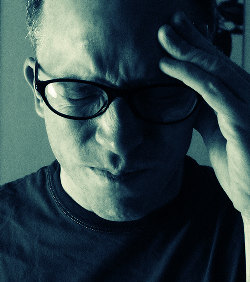"...."There will be at least one person in the crowd who says, 'What are you talking about? I didn't see anything flying out at me.' Or maybe they will say, 'That movie actually made me a little nauseated,' " said Dominick Maino, a professor at the Illinois College of Optometry and the Illinois Eye Institute...."
"....Three to 9 million people in the USA have vision problems that keep them from enjoying such 3-D movies as Avatar and Toy Story 3, estimates the American Optometric Association. And as many as 56% of people between 18 and 38 years of age suffer from symptoms related to depth-perception problems.
"....These problems have to do with binocular vision, the ability to align both eyes on a target and combine the visual images from the two eyes into a single, three-dimensional perception.
"We have 3-D because we have two eyes in our head in slightly different places," Maino explained. "When the brain puts two images together, that's when we get the 3-D effect."
"3-D is really our ability to judge distances," he said. "It's a real nice survival trait, so we could tell how far away that saber-toothed tiger is and have him for lunch rather than the other way around."...."
Several different vision disorders could be the cause of the problem, including:
• Amblyopia, or lazy eye, which occurs when one eye does not see as well as the other. "Because of that difference between the two eyes, the ability to see 3-D is greatly reduced or absent," Maino said.
• Strabismus, or crossed eyes, in which the eyes do not line up in the same direction when focusing. Ultimately, a person with strabismus begins to suffer from double vision or loses the ability to see in 3-D.
• Convergence insufficiency, in which the eyes are incapable of turning toward each other to fix on the same distance.
Any of these can be treated by an optometrist or ophthalmologist. In fact, Maino said, the new 3-D movies are giving some people their first clue of a vision problem they may have had for a long time without recognizing it.
The problems, though, can be treated using optometric vision therapy, in which eye patches or special pairs of glasses are utilized to teach the eyes how to work together, Press and Maino said. Some of the techniques already are used to help kids with amblyopia or strabismus.....
By the end of vision therapy, "we should have someone who has single, clear, two-eyed vision," Maino said...."

No comments:
Post a Comment
You may comment on any aspect of this blog. You can not leave messages that promote or sell any service or product.